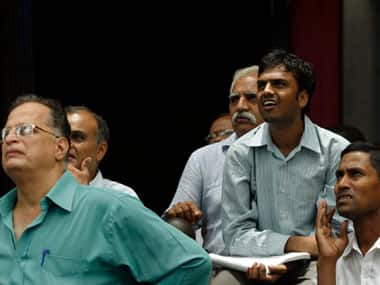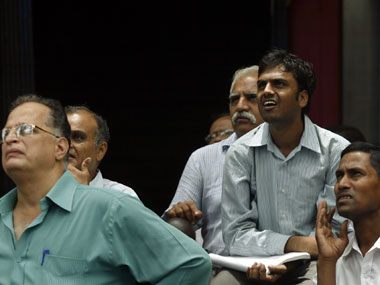To address investor concerns over taxation issues, the Finance Ministry on Thursday proposed a monetary limit for invoking the controversial General Anti-Tax
Avoidance Rules (GAAR) in its draft guidelines issued late in the night.
The general anti-avoidance rules (GAAR), introduced in the budget in March this year, target companies and investors routing investments through tax havens but have provoked an outcry among foreign investors at a time when the country needs capital inflows.
Although the draft did not specify the monetary limit, it said that those deals which are over a prescribed limit should be covered by GAAR provisions. The rules will include the threshold limits for different types of transactions, and will also clarify the status of participatory notes and private equity funds.
[caption id=“attachment_361217” align=“alignleft” width=“380” caption=“Reuters”]
 [/caption]
[/caption]
The guidelines further said that GAAR provisions would be invoked only in cases where FIIs choose to take the benefit of double tax avoidance treaties. This means that foreign institutional investors not opting for treaty benefits and ready to pay taxes will not come under GAAR, but those who do opt for dual taxation avoidance agreements will come under its purview.
“Where an FII chooses to take a treaty benefit, GAAR provisions may be invoked in the case of the FII, but would not in any case be invoked in the case of the non-resident investors of the FII,” the draft guideline said.
The rules would not apply retrospectively, as many investors had feared, and would apply only to income accruing from April 1, 2013. An income threshold also has been suggested for invoking the GAAR. Earlier on Thursday, finance secretary RS Gujral also categorically shot down any speculation that GAAR will be deferred further or “dropped”.
“We have finalised the GAAR draft rules after three meetings with the stakeholders. The draft will have examples for what would be deemed as permissible and impermissible arrangement,” Finance Secretary R S Gujral had said earlier in the day.
The guidelines say that the onus of proving tax liability lies with the Indian authorities and have proposed time limits for completion of various actions under the GAAR.
Vague wording and lack of clarity on their implementation left scope for potential misuse, which panicked foreign investors and hammered India’s equity and currency markets. Data released in June showed that rich overseas entities, investing in Indian markets through participatory notes, were estimated to have pulled out over Rs 1 lakh crore in less than three months on fears of getting caught in the government’s taxation net.
A flight of investors forced the government in May to defer implementation of the guidelines until 2013.
The draft guidelines also proposed setting up a three-member Approving Panel to decide whether a particular case would attract the provisions of the GAAR. The guidelines has proposed time limits for completion of various actions under the GAAR. The GAAR provisions were proposed by former Finance Minister Pranab Mukherjee in his budget to prevent tax evasion.
The committee, which is headed by Director General of Income Tax (international taxation), looked into the concerns of the investors and came out out with draft guidelines to seek comments of the stakeholders.
The draft guidelines come after a government official said Prime Minister Manmohan Singh would seek within two to three weeks to clear up confusion over tax policy that has rattled investor confidence in Asia’s third-largest economy.
Though the flurry of comments and promises of action have lacked specifics, investors are anticipating more policy reforms after Singh on Tuesday assumed an additional role of acting finance minister after the previous incumbent, Pranab Mukherjee, stepped down.
“The market is having significant expectations that a lot of tax policy issues would get sorted out and there will be renewed focus on investment cycle,” said Nilesh Shah, chief executive of Envision Capital, an investment advisory firm in Mumbai.
“Markets are eyeing either fiscal measures, monetary measures, tax measures or clarity on policy issues to move further,” he added.
Another issue that has displeased investors is an amendment to income tax law that empowers the government to retroactively tax investments.
Analysts says the move is intended to target Vodafone’s, purchase of Hutchison Whampoa’s Indian assets, as the government says the London-based mobile operator had structured the deal to avoid paying taxes.
REVIVING CAPITAL INFLOWS
Earlier, media reports suggested that the prime minister’s office planned to issue an “explanatory note” on portfolio investments, without giving details about what the statement would say or which tax issues it would address.
However, it is widely known that the prime minister’s office was unhappy with the way Mukherjee handled the tax proposals in the federal budget in March.
Singh said at a meeting of economic advisers and top Finance Ministry officials on Wednesday that “reviving investor sentiment” was a top priority.
The uncertainty about taxes had led some investors to reduce investments in India, with $926.8 million in outflows from markets in April, sharply down from a combined $12.3 billion in inflows from January to February.
A Finance Ministry official said the government recognised that a revival of capital inflows would prop up the equity market, bringing retail investors into mutual funds. This in turn would deter investments in gold and other assets, which widen the current account deficit.
Singh told officials at Wednesday’s meeting he was concerned that “investor sentiment is down and capital flows are drying up”.
He said he wanted to revive the “animal spirit” of an economy that was roaring with growth of well above 9 percent in the three years before the global financial crisis in 2008-2009.
India’s economy is growing at its slowest pace in nine years, the rupee is the worst performing currency in Asia this year, inflation remains high, industrial production has flatlined and the country faces the threat of having its credit rating downgraded to junk.
Many investors and economists blame weak leadership and muddled policies that have failed to curb government spending and alienated many foreign investors.
Agencies
)